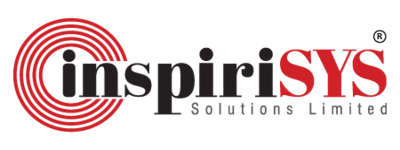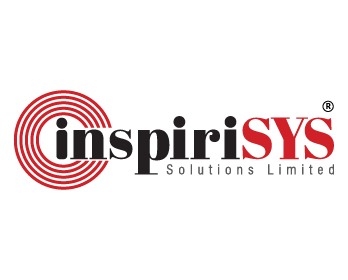What is an Agile Methodology?
The Agile methodology is a comprehensive framework comprising techniques, values and principles aimed at improving the collaborative efforts of software development teams in delivering innovative applications and updates. Agile is all about:
- Human-centric collaboration over rigid processes and tools
- Working software that delivers real value to customers
- Collaborative customer relationships
- Being flexible and adapting to change
Key Takeaways
- Agile methodology is built on flexibility and adaptability, enabling teams to respond effectively to changing project requirements.
- It involves breaking down the project into small increments called sprints.
- The Agile methodology uses a customer-focused approach.
The agile framework employs an iterative methodology comprising a sprint, each undergoing a series of analyses. This serves as a feedback loop, enabling teams to improve, refine the process and adjust their strategy to optimize the sprint. Teams can ensure continuous improvement and deliver high-quality software products.
Learn more about Agile Adoption Statistics How is Software Development Changing and uncover the trends shaping the future of this dynamic field.
Stages of Agile Software Development Life Cycle
The Agile development process is segmented into distinct stages, each designed to enhance flexibility and improve product outcomes. Here's an overview of each stage and its contribution to the lifecycle of software development.
1. Concept
The beginning stage involves key stakeholders coming together to define and refine the project’s scope and main objectives. They engage in strategic discussions to identify critical priorities and essential functionalities of the project. A detailed review of anticipated expenses, required timelines, and necessary resources is conducted to evaluate the project's feasibility and strategic alignment with business goals.
2. Inception
This pivotal second stage of the agile development lifecycle involves the project leader assembling key personnel, delineating their specific roles, and ensuring they are equipped with the necessary resources to commence development.
The stage is split into two key segments that lay the foundational framework for the project. Initially, a strategic plan is devised alongside methodologies that will steer the development efforts. The Inception stage includes:
- UI/UX Design: Designers develop initial prototypes of the user interface, performing detailed competitive analysis to refine design decisions and enhance user engagement.
- Product Architecture: This component involves the collaborative selection of optimal technological tools and strategies that best fulfill the project's specifications.
3. Iteration
Commonly referred to as the development stage, this stage is characterized by the collaborative efforts of developers and UI/UX designers. It focuses on integrating business requirements and user feedback directly into the development process. The team's primary task during this stage is to refine the product backlog, which is systematically addressed through a sequence of development sprints.
In this stage, a minimum viable product (MVP) is developed, featuring core functionalities that are essential for initial user engagement. Additional features are gradually added in subsequent iterations based on feedback and testing. After completing this stage, the team moves on to conduct thorough quality assurance checks so that the product meets all specified standards before concluding the iteration.
4. Testing
In the testing stage of Agile development, each sprint concludes with rigorous evaluations to ensure the digital product adheres to the highest standards. This critical stage leverages various testing methodologies to scrutinize and enhance the software, embodying the Agile commitment to quality and continuous improvement.
- Unit Testing: The QA team conducts an isolated assessment of each front-end and back-end component, meticulously examining their performance and functionality to ensure they meet the required standards.
- Integration Testing: In this stage, the various components of the product are combined and tested as a unit to ensure seamless interaction.
- Acceptance Testing: Quality assurance specialists conduct a thorough evaluation to determine whether the digital solution meets the end-user requirements, ensuring that it satisfies the intended purpose and user expectations.
- System Testing: A comprehensive examination of the entire system is carried out to verify that all the components interact seamlessly and function as planned. Upon successful testing, the QA team approves to proceed to the next deployment stage.
5. Release Stage
The release stage centers on delivering a product that not only meets but exceeds customer expectations in quality and reliability. During this stage, intensive quality assurance testing is carried out to identify and rectify any defects, ensuring the product's efficiency and reliability before it reaches the customers.
6. Review Stage
After completing rigorous testing and verification, the product is prepared for launch. This stage also focuses on optimizing the user experience by providing necessary training and support, which helps users effectively utilize the software. Following these activities, the development team moves toward the final steps of the project lifecycle.
Each phase of the Agile Software Development Life Cycle contributes uniquely to the development of high-quality, market-aligned products. By following these stages, teams can adapt more effectively to emerging challenges and incrementally refine their outputs, ensuring ongoing relevance and user satisfaction.
Dive into our detailed article on Agile vs Waterfall: A Comparative Analysis to understand which strategy aligns with your project's needs.
Agile Roadmap
An Agile Roadmap is a strategic tool used in product management to outline the anticipated development and evolution of a product over time within an Agile framework. This roadmap provides a visual depiction of the key stages and features planned for the product, integrating inputs from various stakeholders, including market trends, business goals, and customer feedback. It is essential for aligning the product team and stakeholders around a common understanding of the product's future direction.
Types of Agile Roadmaps:
- Now-Next-Later Roadmaps: This type of roadmap organizes initiatives into three categories: immediate (Now), short-term (Next), and future (Later). This categorization helps teams prioritize their work without being overly committed to specific dates, which maintains flexibility in planning.
- Goal-Oriented Roadmaps: These roadmaps are structured around achieving specific business objectives or outcomes, making it easier for teams to connect their day-to-day activities with overarching business goals.
- Feature-Based Roadmaps: Primarily used by development teams, these roadmaps focus on the rollout of new features and enhancements, detailing the timeline and the sequence of feature introductions.
Creation and Usage
- Development of Agile Roadmaps: The creation of an Agile Roadmap begins by integrating diverse inputs which include analyzing current market trends, understanding organizational goals, and incorporating feedback from customers. This comprehensive approach helps in forecasting future product functionalities and setting realistic milestones that align with business strategies. It is a crucial stage where strategic planning converges with actionable insights to define the trajectory of product development.
- Distribution of Agile Roadmaps: To foster transparency and ensure that all stakeholders are aligned with the product's strategic direction, it is essential to share the Agile Roadmap widely within the organization. This sharing is not just about keeping everyone informed but also about inviting input and collaboration. By disseminating the roadmap across various teams, from development to marketing, and even to executive levels, it ensures that every member understands and supports the strategic decisions reflected in the roadmap.
- Updating and Adapting Agile Roadmaps: Agile Roadmaps are not static documents; they require regular reviews and updates to remain effective. As new market data becomes available, customer feedback is gathered, and organizational priorities shift, the roadmap must evolve to reflect these changes. This continuous updating process ensures that the roadmap always provides relevant guidance for product strategy and development efforts, making it a living document that adapts to support the product's success over time.
Purpose of Agile Roadmaps:
- To Provide Strategic Planning: A structured approach is provided to outline the development trajectory of a product, incorporating the strategic visions and goals of the product management team.
- To Coordinate Efforts: A central guide is established to synchronize the activities across various teams, ensuring that every action supports the broader product objectives.
Benefits of Agile Roadmaps:
- Adaptability: Agile Roadmaps are flexible, allowing changes based on market and customer feedback.
- Enhanced Communication: Ensures that all stakeholders have a clear understanding of the product direction and timelines.
- Focused Execution: Helps teams prioritize features and manage resources effectively.
With Agile Roadmaps, teams can smoothly navigate product evolution, continuously adapting and refining to meet user needs effectively.
Key Terms
Continuous integration
CI automates integrating new code into a test environment, combining automated and manual testing to ensure stability before production. It starts testing immediately after code is committed, enhancing the validation process.
Refactoring
Refactoring involves refining existing code to make it more readable and efficient, without altering its functionality. This step reduces future maintenance costs and ultimately improves its overall sustainability.
DevOps
DevOps merges software development and operations to boost the delivery of high-quality software. By combining these two disciplines, DevOps enables faster time-to-market, improved reliability and increased efficiency in testing, building, and deployment.





